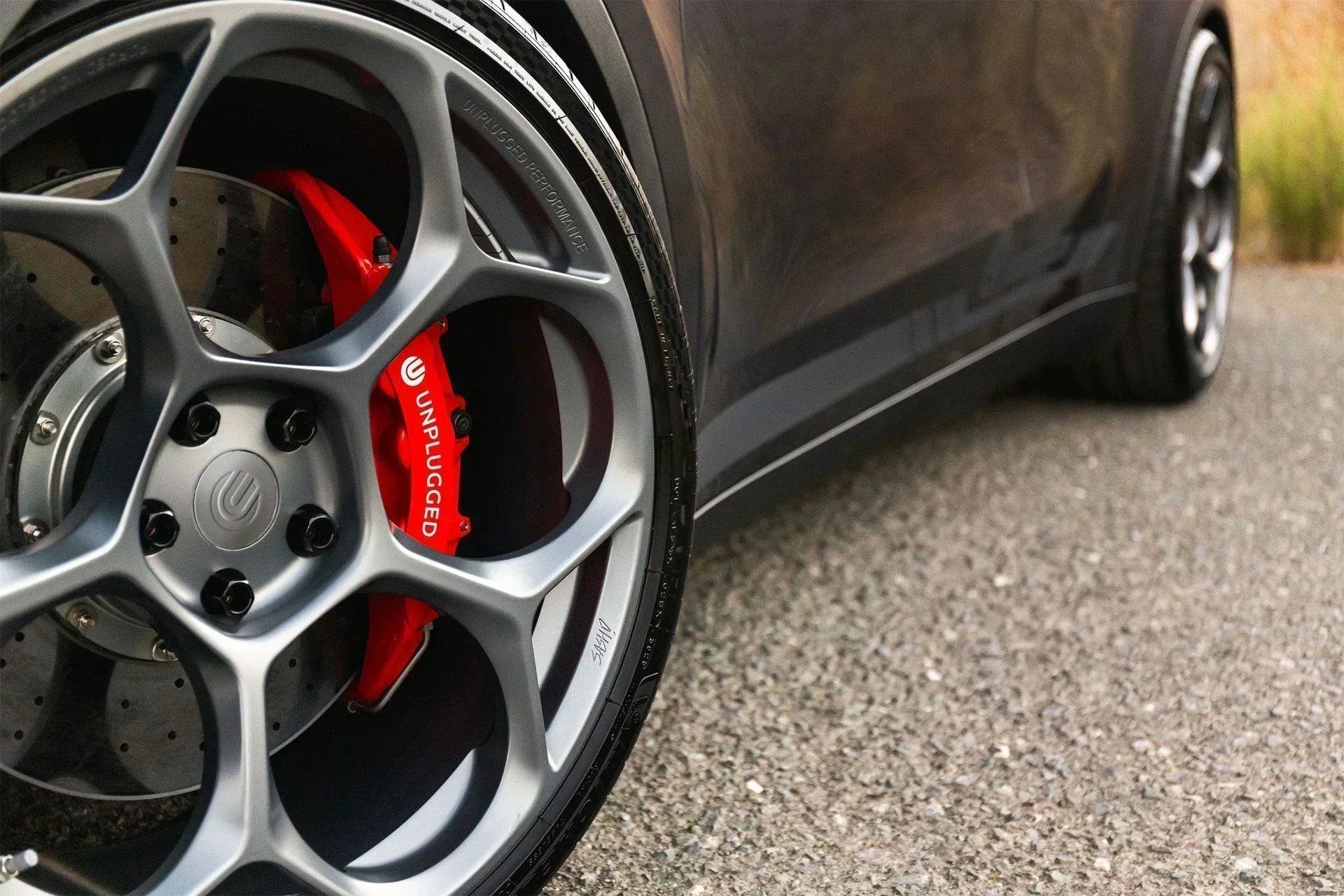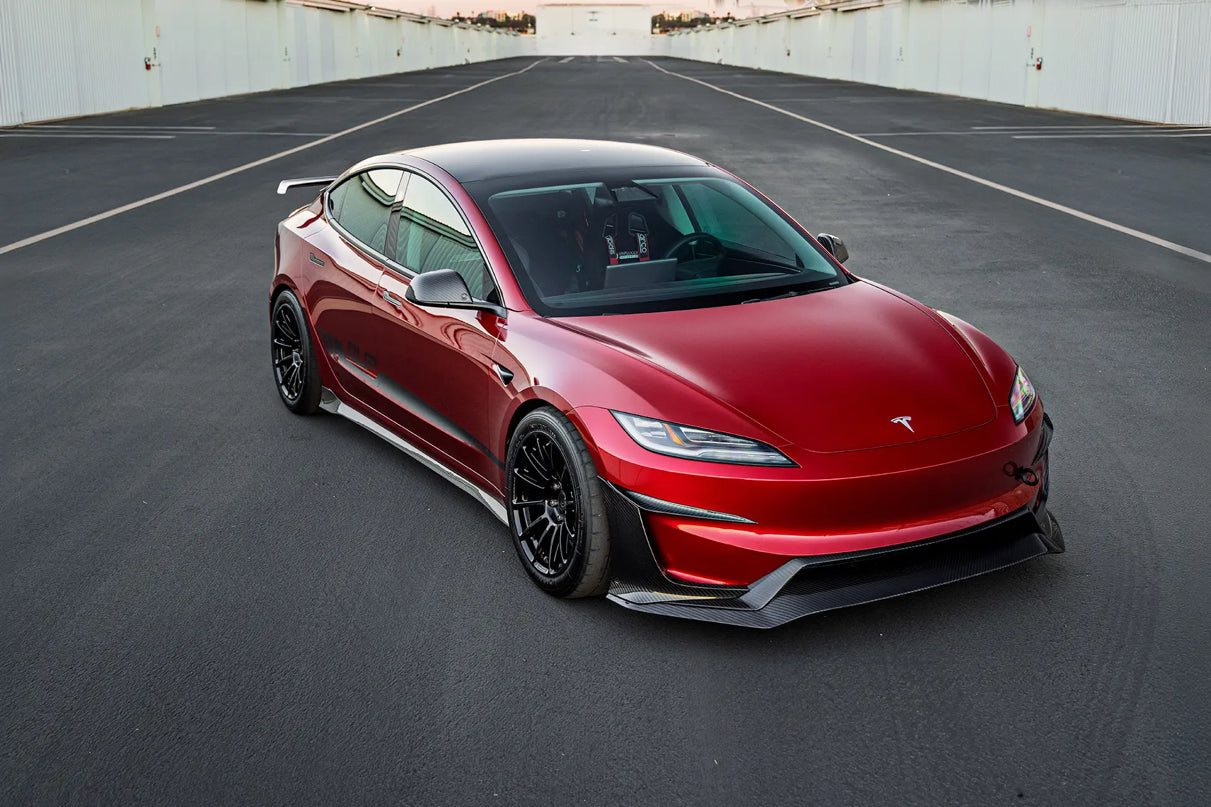Stopping any Tesla on track can be pretty intense! But with a few basic preparations and checks, you can greatly improve your stopping ability - to allow you to simply get on with enjoying your driving.

For anyone who’s only driven their Tesla on-road, you might think that the car has all the stopping power it can ever need. With such an effective regenerative braking system operating so seamlessly underneath you, it may come as a bit of a surprise to learn that the car really needs some brake upgrades before you venture into the world of track driving.
But given the weight and power of these cars, it’s no surprise that when you first venture on track – probably with regen turned off – you’ll suddenly find out that the braking system is doing an awful lot of work, and you can’t cheat the laws of physics.
So if you are thinking about joining the ever-increasing number of Tesla owners choosing to enjoy the immense capabilities of your car on track days, autocross, hillclimbs and sprints (and you definitely should do!), this short guide is intended to make sure you get your car ready, and avoid any pitfalls as you prepare for the big day.
Of course, we race routinely to prove the power and durability of our uprated brakes, and part of this is torturing them to find the limits. So here are some practical tips from what we’ve learned over the past decade.
Below are our three essential elements to consider upgrading before you hit the track.
None of these upgrades are too expensive, but with a bit of preparation, they will allow you to have a much more enjoyable, safe day out on the circuit in your Tesla, yet with zero compromises for your daily transport.
1. BRAKE PADS
The essential starting point
The factory Tesla brake pads, put simply, are just not up to slowing almost 2 tons of car down from high speeds repeatedly. All the more so if they’re partly worn

That’s why we offer a couple of choices of uprated Brake Pads for Model 3 and Model Y. The best place to start is our Performance Fast Road and Track Brake Pads. They’re simply the most cost-effective upgrade to improve the braking performance of your Tesla Model 3 or Y with quick and easy fitment to your standard brake hardware.
They’re available for all Model 3 & Y models – note that the Performance model uses different pads to the other versions.
Our second Brake Pad option is more extreme – our Competition & Racing Spec brake pads. Designed to be a “pure racing-style solution”, these Competition brake pads include a more aggressive, high-friction brake pad compound.
If you’re pushing your car harder than our Fast Road and Track Brake Pads can handle, you’ll be doing pretty well!
Our Competition & Racing Spec Pads are the next level up, and are a true race hard compound. You’ll shorten the life of your discs at this level, and likely to experience some compromises when they’re cold. You may also experience some squealing under gentle braking. But get them hot, get out on track, and they’ll perform exceptionally. Your battery will run out before your brakes do!
2. BRAKE LINES
The next upgrade to make
When every Tesla comes out of the factory, the vehicle is delivered with rubber brake lines. This rubber is a great option from both the manufacturer’s and most owners’ perspective, it is durable, resilient, long-lasting, and most importantly, low cost.

However, there are some compromises that always come with rubber brake lines, including the undesirable characteristic for the rubber lines to expand and contract under hard braking. Much more so as the car ages over a few years. This expansion leads to a spongy brake pedal feel, which is actually a loss in the braking capability and response that can be felt. Many drivers assume that they’re feeling brake fade – and they may well be - but some of this squidgy pedal feel will be expansion in the hot, soft rubber lines.
That’s where our stainless steel Performance Brake Lines come in, helping to provide a lovely firm pedal underfoot, even when hot.
3. BRAKE FLUID
The final piece of your brake preparation
The factory brake fluid is a general weak point when you start getting your brake system to the temperatures that track use will elevate it to. All the more so when the car is more than a few years old. Brake fluid slowly absorbs moisture from the atmosphere, which drastically reduces its ability to cope with higher temperatures as the water content interferes with its properties.
Therefore a professional flush with Motul 660 or similar track-orientated fluid is always our recommendation. When brake fluid eventually boils, air enters the system and at worst, a complete loss of pedal is possible. Not fun. Motul 660’s 617 F dry boiling point should always be able to outperform any temperatures that the rest of your braking hardware can throw at it.
Prepare your Tesla with these three areas of braking upgrades and you’ll have a car that can stop (and keep on stopping) just as effectively as it can accelerate along the straights. Meaning you can get out there and enjoy your day on track!

OUR BIG BRAKE KITS
Where to go next
Of course, the risk is that the racing bug will bite! If you really want to start expanding the braking capabilities of your Tesla, it may next be time to commit to one of our Big Brake Kits – developed and proven in serious motorsport applications.

As one of the inevitable rules of car-life, things tend to get more expensive from here on! Our most popular is the Front Steel Big Brake Kit for Model 3 & Y, bringing giant 2-piece discs and 6-piston monoblock calipers for an absolute step-change in Tesla braking.
Fitting a Big Brake Kit (BBK) like this is all about durability and repeatability of your braking. It's worth addressing a bit of a misconception around big brake kits: fitting bigger stoppers probably won't make a big difference in stopping difference in your first stop (as even the factory brakes can generally trigger an ABS intervention on road tyres - which defines your max deceleration force). Rather, the benefits of a BBK come on the tenth big stop, the twentieth or even the hundredth, particularly as you improve your tyres to provide higher grip. Which is exactly the scenario that you want to achieve when you need to perform again and again, lap after lap.
Want to go further still? That’s no problem. Our Superlight Carbon Ceramic Brake Kit brings real supercar technology to your Tesla. With our race brake pads and carbon brake discs, the system can support insane temperatures well beyond 1500 F. Generally speaking our pads and carbon discs can actually perform reliably at higher temps than all but the highest-spec race brake fluids can handle.

GETTING THE MOST FROM YOUR BIG BRAKE KIT
A few notes for track use
- All of our big brake kits have high temp vinyl decals that will turn from white to grey to black based on caliper temps (replacement stickers are free). Attached you can see our race car’s white sticker turned black as it hit about 500 degrees F. If the stickers are turning grey or black consider more aggressive brake ducting or adjustment of driving style to manage heat. In this case, shown we ran our race car on zero regen flat out for a long session to try to find the limits of the brakes. We don’t suggest racing on zero regeneration on a plaid!
- Our race brake pads and carbon brake rotors can support insane temps well beyond 1500 F. Generally speaking our pads and discs can perform reliably at higher temps than most brake fluids can handle.
- Caliper temperatures often correlate more closely to brake fluid temperatures and should be monitored closely. Our logos do it naturally because if they’re still white odds are the brake fluid hasn’t seen extreme temps. Adding a temp sticker like shown gives further insight into peak temps. At extreme temps where these stickers burn, a caliper rebuild may be needed.
- Ducting – for any race car ducting is essential. Correctly routed airflow keeps temps down and increases the longevity of the brake fluid in particular which is commonly the weakest link in an upgraded system.




1 comment
Model3P
Thanks for this guide, very helpful. Hoping to get mine out on track for the first time later this year 😎
Leave a comment
All comments are moderated before being published.
This site is protected by hCaptcha and the hCaptcha Privacy Policy and Terms of Service apply.